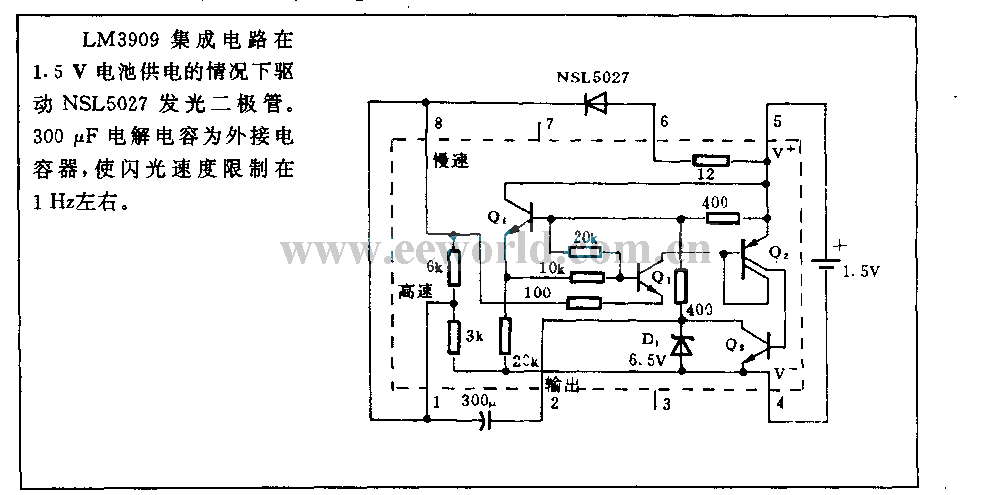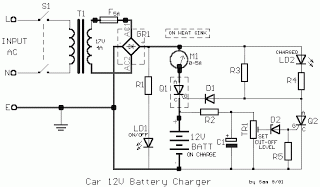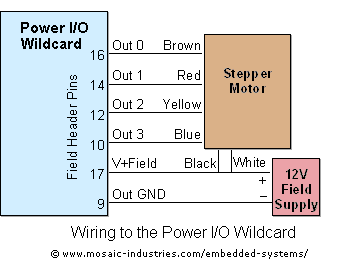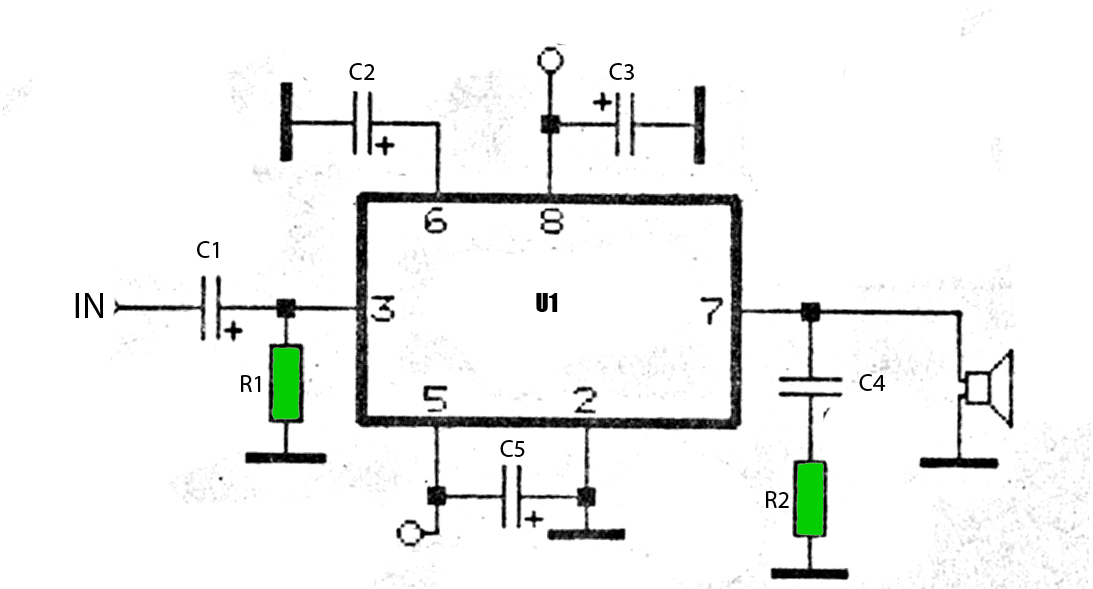
Car brake Light
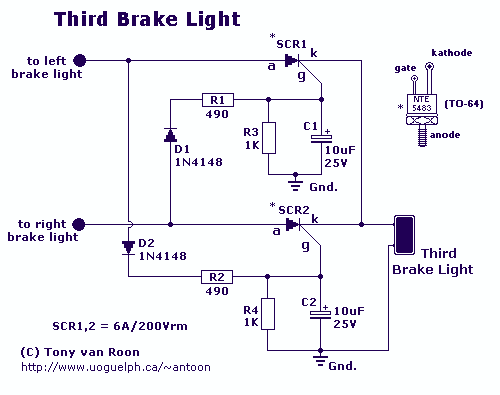
What's so special about this circuit? Well, the first third-brake light I installed I had to pull a wire from the Third Brake Light all the way underneath the carpet to the brake-pedal-switch and I thought it would be easier to pluck the signal of both brakelights via the trunk. Bench-test your circuit first and apply power to the circuit, with the brakelight connected, for at least a couple of minutes. More: If the two SCR's are getting hot (depending on the type of bulb(s) in your 3rd brake light), mount coolribs on them. I used the NTE5483 which is a 8A, 200Vrm type.
The circuit described involves the integration of a third brake light into an automotive lighting system, with a focus on simplifying the wiring process. The design utilizes two silicon-controlled rectifiers (SCRs), which serve as electronic switches that control the operation of the third brake light based on the signals received from the existing brake lights.
In this configuration, the SCRs are activated when the brake pedal is pressed, allowing current to flow to the third brake light. This method effectively eliminates the need to run a wire directly from the brake pedal switch, thereby reducing installation complexity and improving aesthetics by minimizing visible wiring.
The NTE5483 SCR, rated for 8A and 200V, is suitable for this application, providing adequate current handling for typical automotive brake light bulbs. It is essential to monitor the temperature of the SCRs during operation, especially under load conditions, as excessive heat can lead to failure. If the SCRs are found to be overheating, the addition of heat sinks or cool ribs is recommended to enhance thermal dissipation and ensure reliable operation.
Before final installation, it is advisable to conduct a bench test of the circuit. This involves applying power to the circuit with the brake light connected for a duration of several minutes to confirm that the SCRs are functioning correctly and that the third brake light illuminates as expected when the brake pedal is engaged. Proper testing will help identify any potential issues before the circuit is permanently installed in the vehicle.What's so special about this circuit? Well, the first third-brake light I installed I had to pull a wire from the Third Brake Light all the way underneath the carpet to the brake-pedal-switch and I thought it would be easier to pluck the signal of both brakelights via the trunk. Bench-test your circuit first and apply power to the circuit, with the brakelight connected, for at least a couple of minutes.
If the two SCR's are getting hot (depending on the type of bulb(s) in your 3rd brake light), mount coolribs on them. I used the NTE5483 which is a 8A, 200Vrm type. 🔗 External reference
The circuit described involves the integration of a third brake light into an automotive lighting system, with a focus on simplifying the wiring process. The design utilizes two silicon-controlled rectifiers (SCRs), which serve as electronic switches that control the operation of the third brake light based on the signals received from the existing brake lights.
In this configuration, the SCRs are activated when the brake pedal is pressed, allowing current to flow to the third brake light. This method effectively eliminates the need to run a wire directly from the brake pedal switch, thereby reducing installation complexity and improving aesthetics by minimizing visible wiring.
The NTE5483 SCR, rated for 8A and 200V, is suitable for this application, providing adequate current handling for typical automotive brake light bulbs. It is essential to monitor the temperature of the SCRs during operation, especially under load conditions, as excessive heat can lead to failure. If the SCRs are found to be overheating, the addition of heat sinks or cool ribs is recommended to enhance thermal dissipation and ensure reliable operation.
Before final installation, it is advisable to conduct a bench test of the circuit. This involves applying power to the circuit with the brake light connected for a duration of several minutes to confirm that the SCRs are functioning correctly and that the third brake light illuminates as expected when the brake pedal is engaged. Proper testing will help identify any potential issues before the circuit is permanently installed in the vehicle.What's so special about this circuit? Well, the first third-brake light I installed I had to pull a wire from the Third Brake Light all the way underneath the carpet to the brake-pedal-switch and I thought it would be easier to pluck the signal of both brakelights via the trunk. Bench-test your circuit first and apply power to the circuit, with the brakelight connected, for at least a couple of minutes.
If the two SCR's are getting hot (depending on the type of bulb(s) in your 3rd brake light), mount coolribs on them. I used the NTE5483 which is a 8A, 200Vrm type. 🔗 External reference
